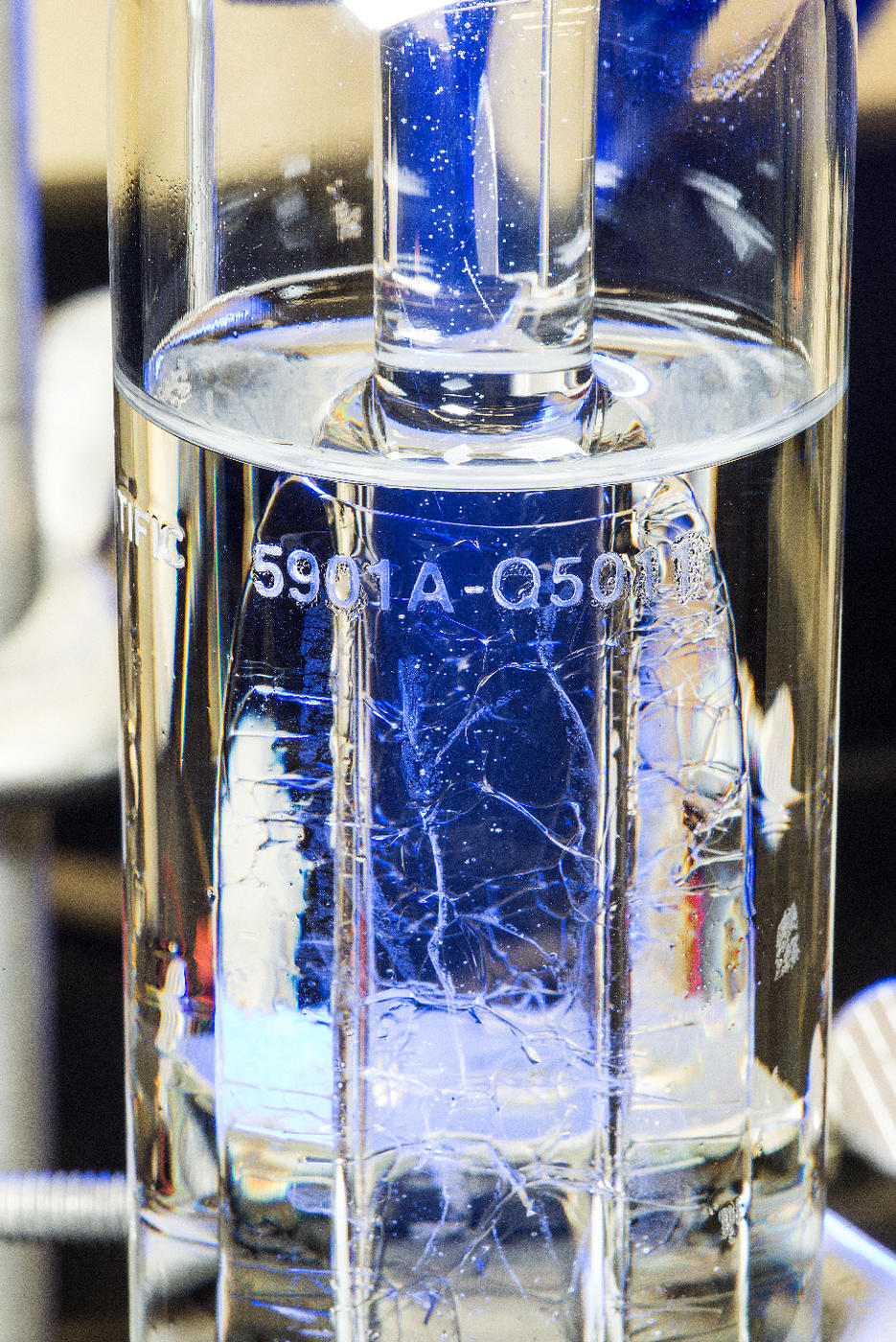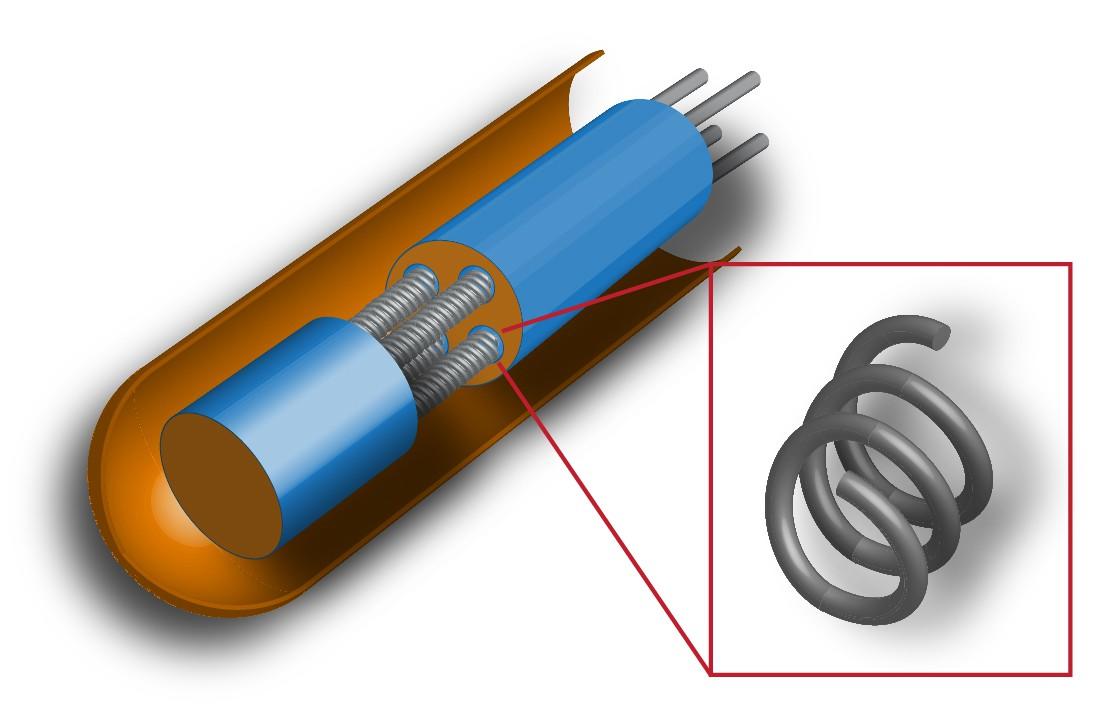Kelvin: Present Realization
Realizing an SI unit — that is, converting its formal definition into concrete reality — requires following a specific set of methods and directions called a mise en pratique, a French phrase meaning “practical application.” The BIPM specifies a mise en pratique for each SI base unit. For temperature, the procedure does not entail realizing exactly 1 kelvin, but exactly 273.16 kelvins.
For many years, the kelvin was realized through the triple point of water, the point at which a precise formulation of water exists simultaneously as a solid, liquid and gas when it’s in thermal equilibrium (in other words, when the water has no net gain or loss of heat). It has served as a valuable universal standard because, when this water is under a specific amount of pressure, the triple point always occurs — by definition — at exactly the same temperature.
That temperature is 273.16 K. And for a long time, this triple-point temperature both defined the kelvin and helped to translate it into practical reality. Until 2019, the kelvin was defined as “the fraction 1/273.16 of the thermodynamic temperature of the triple point of water.”
But that all changed with the redefinition of the SI. In May of 2019, the kelvin was redefined in terms of a fundamental quantity in nature known as the Boltzmann constant. Today, the kelvin is defined by taking the fixed numerical value of the Boltzmann constant k to be 1.380 649 ×10−23 when expressed in the unit J K−1, which is equal to kg m2 s−2 K−1, where the kilogram, meter and second are defined in terms of other fundamental constants.
Though it no longer defines the kelvin, the triple point of water remains a convenient and practical way to calibrate thermometers. This is accomplished with a triple-point cell, which consists of a pressure-sealed glass cylinder nearly filled with water. The cell is evacuated with a vacuum pump until the pressure inside is 611.657 pascals (about 0.6 percent of the air pressure at sea level). Running down the center axis of the cell is a tubular chamber open to the air. This chamber, called the thermometer well, is the space into which cooling materials are placed and a thermometer is subsequently lowered.

The triple-point cell contains a very specific formulation of water. Like all atoms, the hydrogen and oxygen in water have different “isotopes” — variations of the same atom. For example, oxygen atoms exist in several forms, such as oxygen-16 (16O), oxygen-17 (17O), and oxygen-18 (18O). All these forms have eight electrons and eight protons, but they differ in their numbers of neutrons, with 16O having only eight neutrons, making it the lightest isotope, and 18O having 10 neutrons, making it the heaviest isotope. (Notice that the isotope number is the sum of the number of protons and neutrons in the atom.) Similarly, hydrogen is found most abundantly as 1H, with one proton and zero neutrons, but some hydrogen exists as 2H (one proton and one neutron), known as deuterium (D). When deuterium atoms occur in a water molecule, it’s called heavy water (D2O).
Because even slight variations in the hydrogen and oxygen isotope concentrations of water can affect the triple-point temperature, the measurement science community worldwide agreed on a specific formulation known, somewhat oddly, as Vienna Standard Mean Ocean Water.
The name does not refer to seawater, but to the chemical composition of distilled ocean water. “Vienna” is part of the name because the International Atomic Energy Agency, based in Vienna, promulgated the standard formulation. It is “defined exactly by the following amount of substance ratios: 0.00015576 mole of 2H per mole of 1H; 0.0003799 mole of 17O per mole of 16O, and 0.0020052 mole of 18O per mole of 16O.”
The triple-point cell is cooled by placing material such as dry ice in the central thermometer well. That causes an ice mantle a few millimeters thick to form in the water surrounding the well. Because the mantle initially has defects and strains that can affect its temperature, BIPM’s mise en pratique says that “it is necessary to allow the mantle to anneal [slowly cool] for at least 10 days.” This is done by placing the cell in a water bath chilled to just below the triple-point temperature until the strains and cracks heal themselves.
Just before the final measurement is made, a room-temperature glass rod or other device is inserted very briefly into the thermometer well. This causes an extremely thin inner melted layer to form between the outer glass wall of the well and the ice mantle, such that the mantle can rotate freely around the well.
At that point, a properly prepared cell will have an interior temperature of almost exactly 273.16 K. (Among laboratory-grade cells, the range of actual triple-point temperature values is very small, approximately 50 µK, or 50 millionths of a kelvin, around this value.) Scientists insert a thermometer into the cell and allow it to come to thermal equilibrium. The thermometer’s reading is compared to the known temperature in the cell, and the results are used to calibrate the instrument.

Typically, those calibrations are performed on standard platinum resistance thermometers, which are used to measure temperatures between -200-1,000 degrees Celsius.

